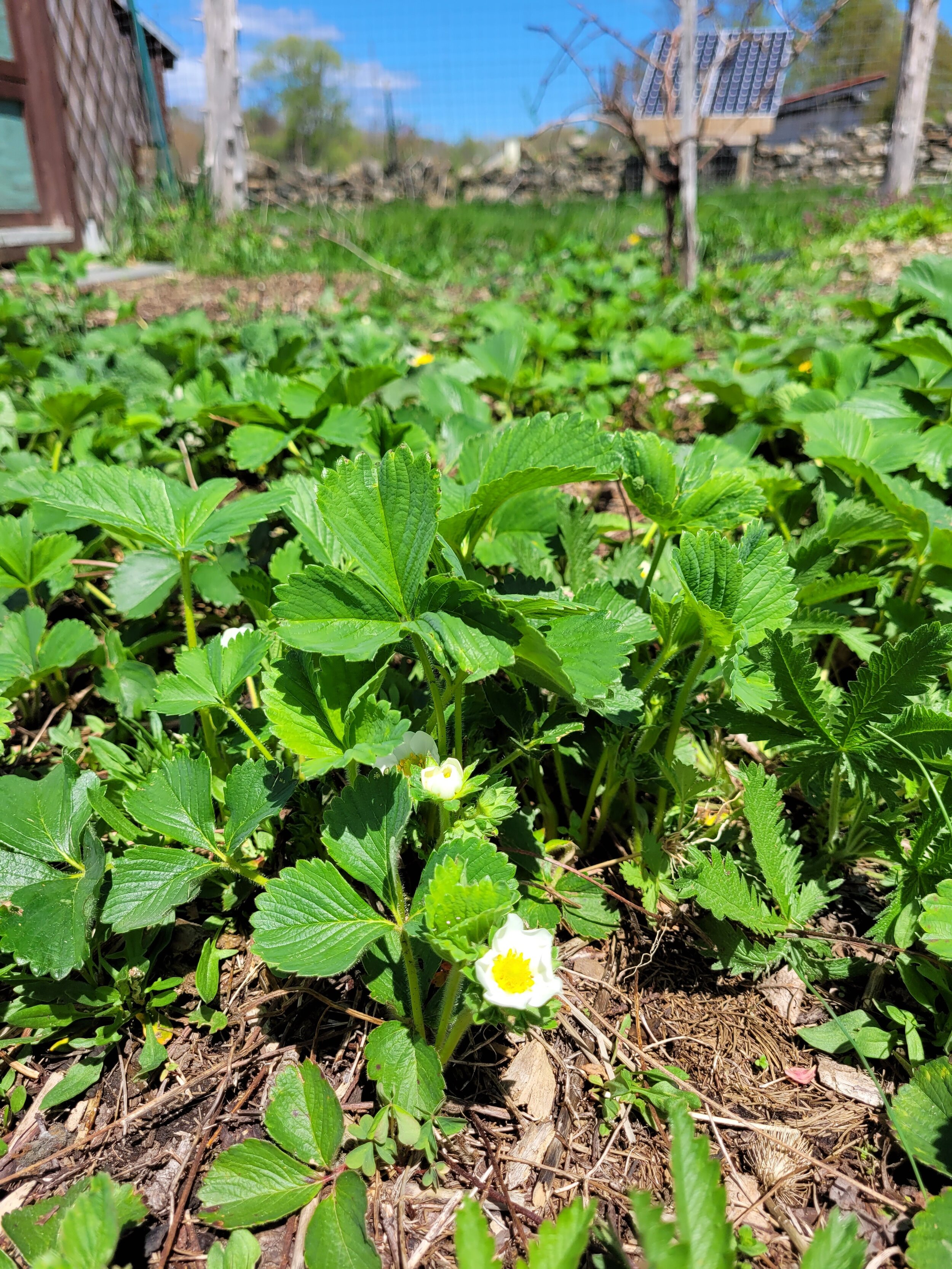 Image 1 of
Image 1 of


Boysenberries
Rubus spp.
Description
All members of the Rubus genus grow in brambles of canes with serrated leaves and bunches of delicious fruit high in anthocyanins and other antioxidants.
Boysenberries:
These behemoth plants can get quite large if not pruned regularly, and can be trained into an almost bush-like stature. These are a thornless variety with pretty red stems. The fruits are large, dark, and very sweet with just the right hints of astringency and bitterness.
Like other members of the Rubus genus, boysenberry canes can be propagated by tip-layering in the late-summer or fall, from cane cuttings rooted with bottom heat, as well as from seed.
Site Preference
Tolerant of most soil types and crop heaviest in full sun.
Hardiness
Zone 4
Rubus spp.
Description
All members of the Rubus genus grow in brambles of canes with serrated leaves and bunches of delicious fruit high in anthocyanins and other antioxidants.
Boysenberries:
These behemoth plants can get quite large if not pruned regularly, and can be trained into an almost bush-like stature. These are a thornless variety with pretty red stems. The fruits are large, dark, and very sweet with just the right hints of astringency and bitterness.
Like other members of the Rubus genus, boysenberry canes can be propagated by tip-layering in the late-summer or fall, from cane cuttings rooted with bottom heat, as well as from seed.
Site Preference
Tolerant of most soil types and crop heaviest in full sun.
Hardiness
Zone 4
Rubus spp.
Description
All members of the Rubus genus grow in brambles of canes with serrated leaves and bunches of delicious fruit high in anthocyanins and other antioxidants.
Boysenberries:
These behemoth plants can get quite large if not pruned regularly, and can be trained into an almost bush-like stature. These are a thornless variety with pretty red stems. The fruits are large, dark, and very sweet with just the right hints of astringency and bitterness.
Like other members of the Rubus genus, boysenberry canes can be propagated by tip-layering in the late-summer or fall, from cane cuttings rooted with bottom heat, as well as from seed.
Site Preference
Tolerant of most soil types and crop heaviest in full sun.
Hardiness
Zone 4
















